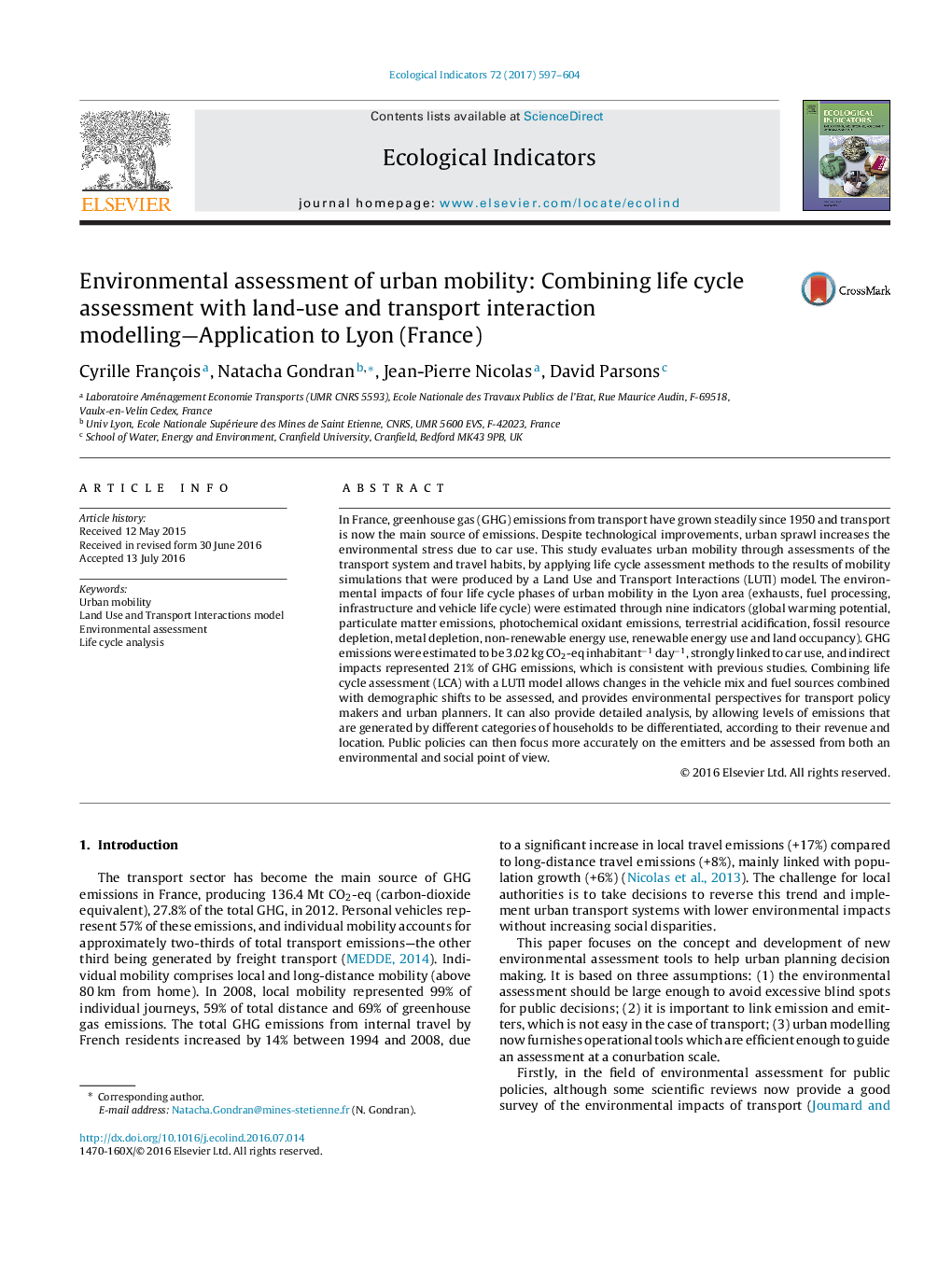| کد مقاله | کد نشریه | سال انتشار | مقاله انگلیسی | نسخه تمام متن |
|---|---|---|---|---|
| 6292834 | 1617130 | 2017 | 8 صفحه PDF | دانلود رایگان |
عنوان انگلیسی مقاله ISI
Environmental assessment of urban mobility: Combining life cycle assessment with land-use and transport interaction modelling-Application to Lyon (France)
ترجمه فارسی عنوان
ارزیابی محیط زیست از تحرک شهری: ترکیب ارزیابی چرخه زندگی با مدل سازی کاربرد تعامل با زمین و استفاده از حمل و نقل به لیون (فرانسه)
دانلود مقاله + سفارش ترجمه
دانلود مقاله ISI انگلیسی
رایگان برای ایرانیان
کلمات کلیدی
تحرک شهری، مدل تعامل زمین و حمل و نقل، ارزیابی زیست محیطی، تجزیه و تحلیل چرخه زندگی،
موضوعات مرتبط
علوم زیستی و بیوفناوری
علوم کشاورزی و بیولوژیک
بوم شناسی، تکامل، رفتار و سامانه شناسی
چکیده انگلیسی
In France, greenhouse gas (GHG) emissions from transport have grown steadily since 1950 and transport is now the main source of emissions. Despite technological improvements, urban sprawl increases the environmental stress due to car use. This study evaluates urban mobility through assessments of the transport system and travel habits, by applying life cycle assessment methods to the results of mobility simulations that were produced by a Land Use and Transport Interactions (LUTI) model. The environmental impacts of four life cycle phases of urban mobility in the Lyon area (exhausts, fuel processing, infrastructure and vehicle life cycle) were estimated through nine indicators (global warming potential, particulate matter emissions, photochemical oxidant emissions, terrestrial acidification, fossil resource depletion, metal depletion, non-renewable energy use, renewable energy use and land occupancy). GHG emissions were estimated to be 3.02Â kg CO2-eq inhabitantâ1Â dayâ1, strongly linked to car use, and indirect impacts represented 21% of GHG emissions, which is consistent with previous studies. Combining life cycle assessment (LCA) with a LUTI model allows changes in the vehicle mix and fuel sources combined with demographic shifts to be assessed, and provides environmental perspectives for transport policy makers and urban planners. It can also provide detailed analysis, by allowing levels of emissions that are generated by different categories of households to be differentiated, according to their revenue and location. Public policies can then focus more accurately on the emitters and be assessed from both an environmental and social point of view.
ناشر
Database: Elsevier - ScienceDirect (ساینس دایرکت)
Journal: Ecological Indicators - Volume 72, January 2017, Pages 597-604
Journal: Ecological Indicators - Volume 72, January 2017, Pages 597-604
نویسندگان
Cyrille François, Natacha Gondran, Jean-Pierre Nicolas, David Parsons,
